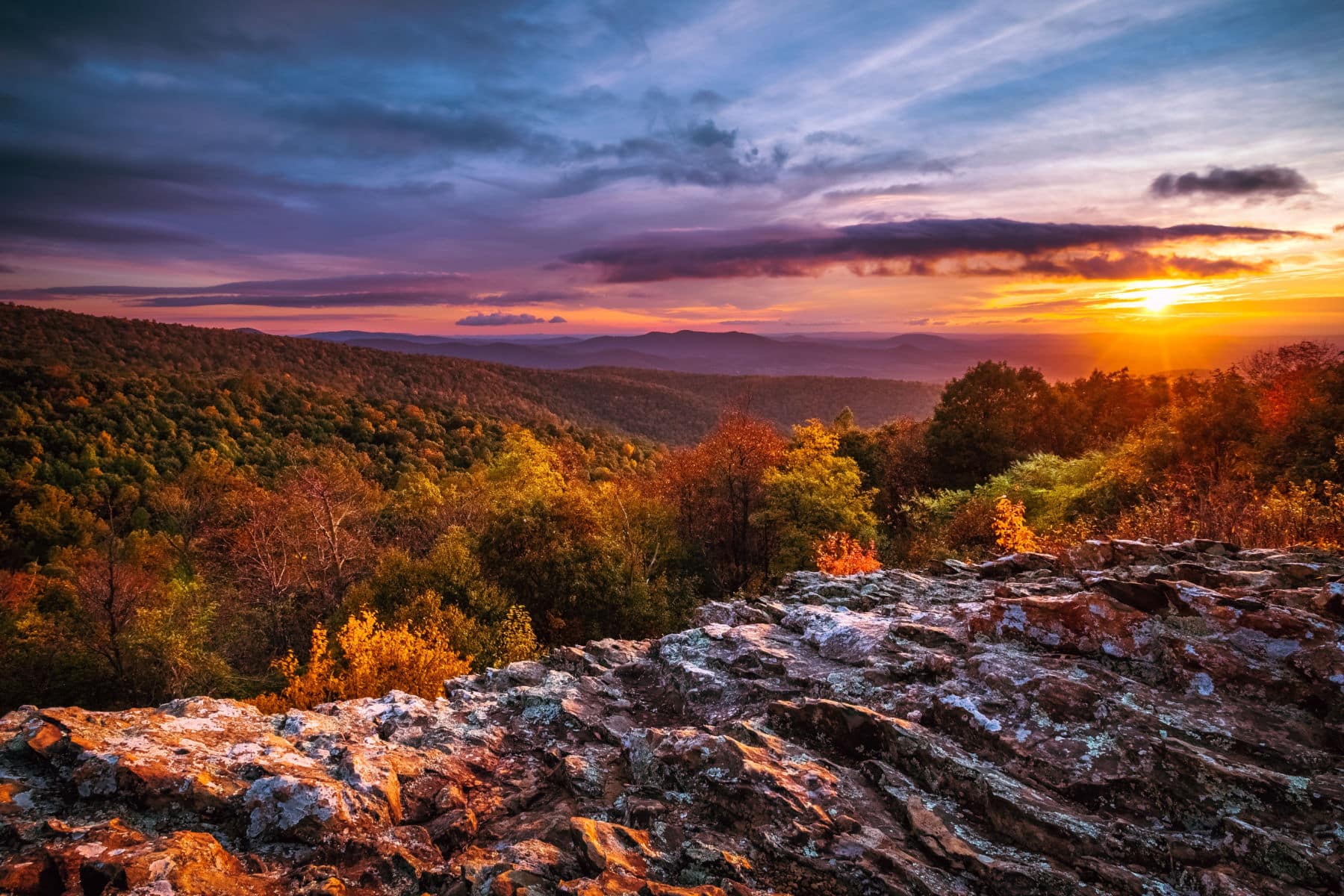
Article Summary: Shenandoah National Park Facts
Shenandoah National Park Facts! In this article, More Than Just Parks provides you with 12 amazing facts about one of America’s most magnificent national parks.
More Than Just Parks is your one-stop-shop when it comes to learning everything you’ll need to know about America’s national parks. We’ve got expert guides, beautiful photos, helpful tips, breathtaking films and so much more.
I’ve been to so many of these amazing places since retiring from teaching in 2018. Did I mention that I taught history? I spent a lifetime teaching about the history behind some of these natural wonders. Then I got to see them firsthand. And now I’m sharing some of the incredible stories about these beautiful places with you. It doesn’t get any better than that!
More Than Just Parks takes a deeper dive with its national park facts. We’ve done our homework so that you’ll get more than you bargained for.
Without further ado, let’s dive in.
Table Of Contents: Shenandoah National Park Facts
Shenandoah National Park Facts
- Facts About Shenandoah National Park
- Shenandoah National Park Facts
- Top 5 Shenandoah National Park Facts
- 1. Shenandoah Is The First National Park To Be Formed Entirely From Land By Private Owners
- 2. Remains Of Prehistoric Creatures Have Been Found In The Park
- 3. Peoples Have Lived In The Shenandoah For At Least 9,000 Years
- 4. A German Physician Was The First European To Visit The Shenandoah
- 5. The Owner Of A Popular Vacation Resort Played An Important Role In The Establishment Of The Park
- Top 10 Shenandoah National Park Facts
- 6. When The Park Was Established, There Were A Group Of Mountain Settlements
- 7. A Virginia Businessman Purchased The Land Necessary To Create The Park
- 8. The Park Was Created By The Civilian Conservation Corps
- 9. Over 1,400 Species Of Plants Can Be Found In The Park
- 10. Shenandoah Is A Refuge For A Diverse Variety Of Wildlife Species
- Top 12 Shenandoah National Park Facts
- Map Of Shenandoah National Park
- We Hope You’ll Follow Us On Our Journey
- Helpful Articles
- Top 5 Shenandoah National Park Facts
Facts About Shenandoah National Park
Shenandoah National Park is a protected area in the Blue Ridge Mountains of Virginia. It’s known for its beautiful views of the surrounding mountains and valleys, as well as its many hiking trails, including the famous Appalachian Trail.
The park covers an area of almost 200,000 acres and is home to a variety of plants and animals, including black bears, white-tailed deer, and over 50 species of reptiles and amphibians.
There are also many historical and cultural sites within the park, including the ruins of old homesteads and the site of a former Civilian Conservation Corps camp.
The park is a popular destination for camping, picnicking, and nature study.
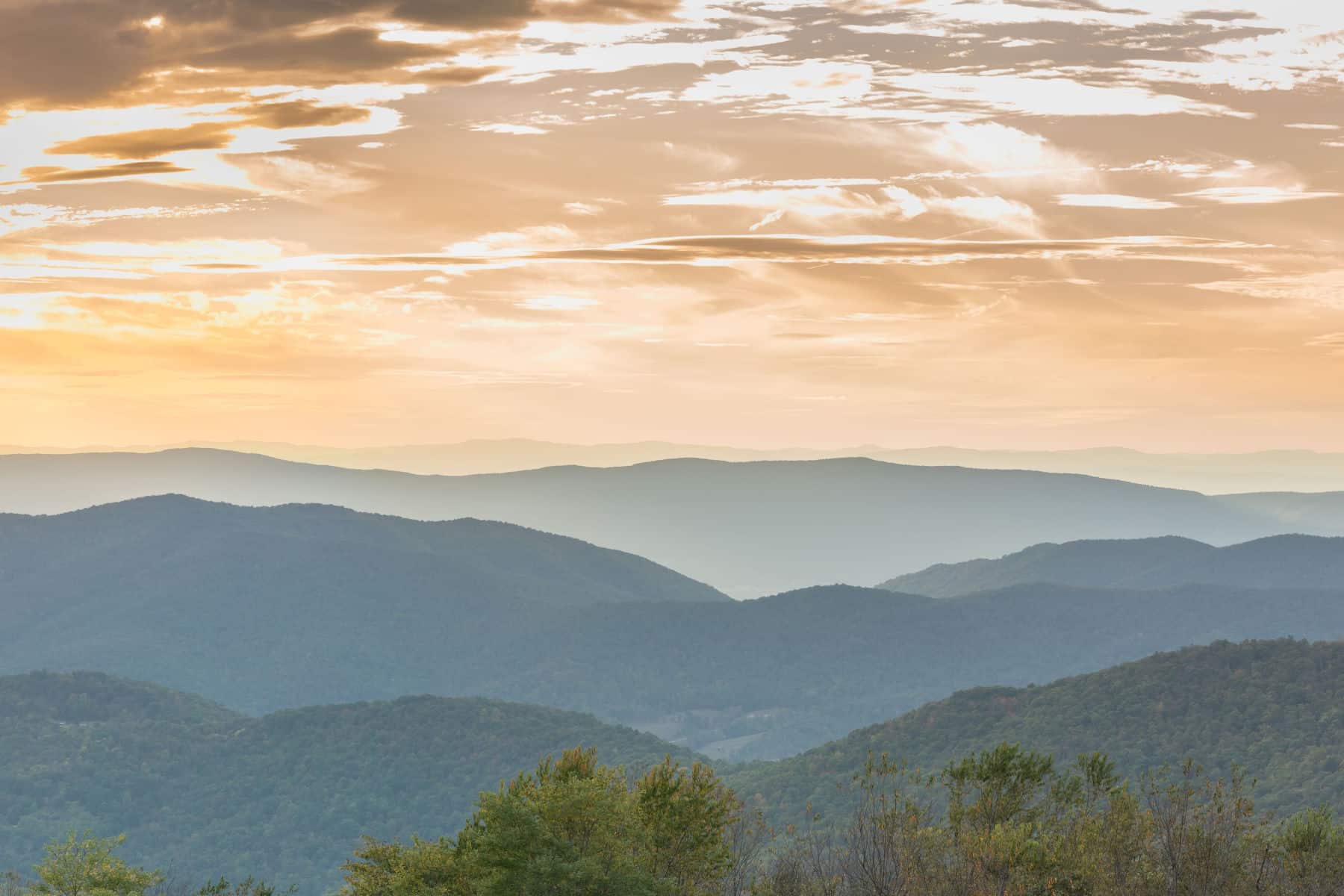
CHECK OUT: 30 EPIC Virginia National Parks Worth Visiting
Some Basic Facts About Shenandoah National Park
- Location: Virginia
- Acreage: 199,200 acres
- Visitation: Over a million people enter Shenandoah National Park’s gates each year, most taking the Skyline Drive to vantage points along 105 miles of the Blue Ridge Mountains.
- Highest Elevation: The highest point in Shenandoah is the summit of Hawksbill Mountain at 4,050 feet. Getting to the summit entails a relatively short hike of less than 2 miles.
- Lowest Elevation: The park contains a wide array of ecology as it rises from a mere 550 feet at its lowest elevation to over 4,049 feet at its highest atop Hawksbill.
- Climate: In Shenandoah, the summers are warm and humid, the winters are very cold and snowy, and it is partly cloudy year round. Over the course of the year, the temperature typically varies from 26°F to 86°F and is rarely below 12°F or above 93°F.
- When Did It Become A National Park? Shenandoah National Park in the northern Blue Ridge Mountains of Virginia was created in 1926 to preserve an area of natural beauty and provide recreational opportunities for the people in the surrounding region.
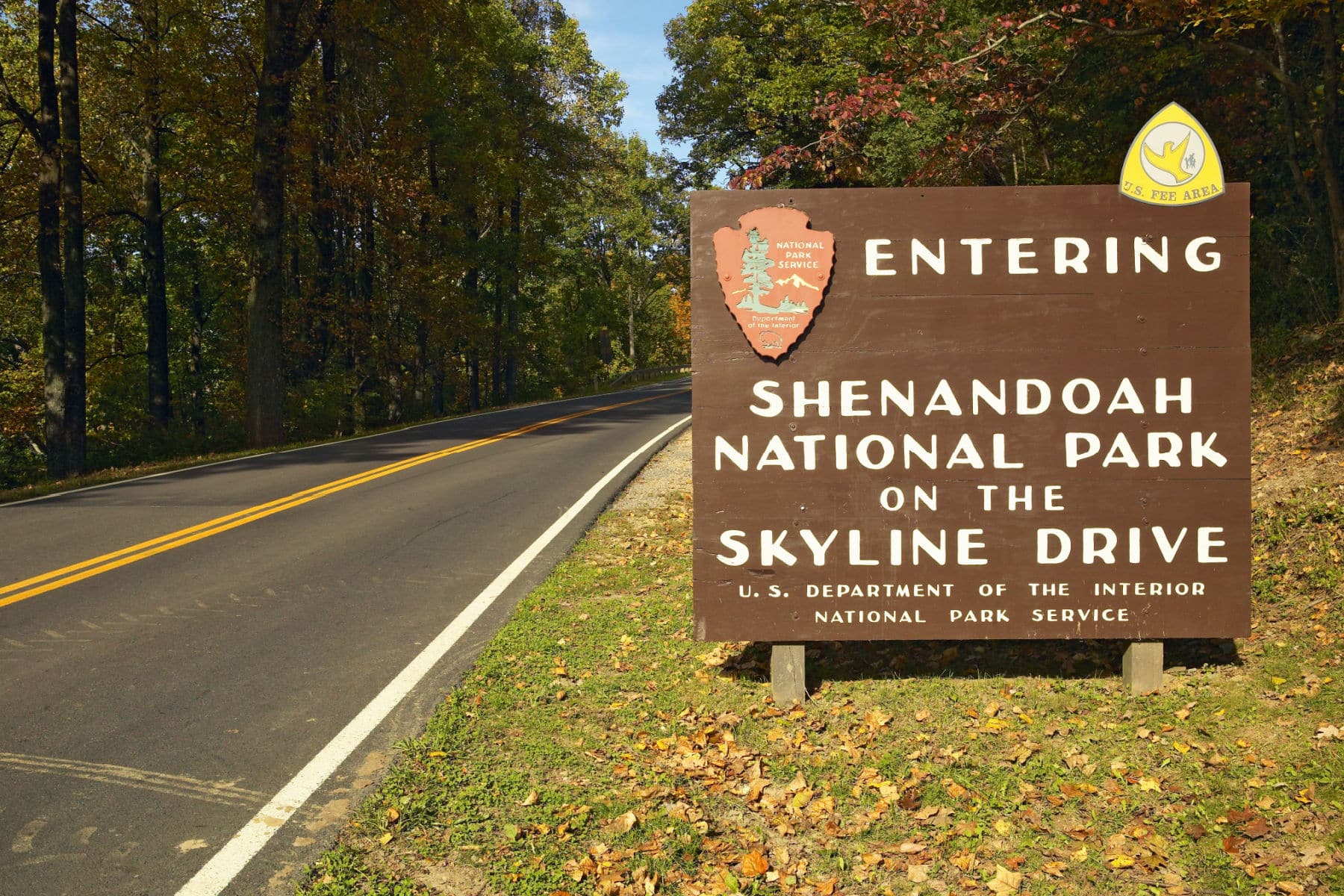
Shenandoah National Park Facts
Top 5 Shenandoah National Park Facts
1. Shenandoah Is The First National Park To Be Formed Entirely From Land By Private Owners
When researching and writing these articles for More Than Just Parks, I am fascinated to learn how these parks are different from each other.
One of the most unique Shenandoah National Park Facts is that it was the first national park ever to be formed entirely from land that had been lived on and used by private owners.
It was a collaborative effort whereby millions of dollars had to be raised from private sources to purchase the land while the Virginia legislature was willing to provide its financial support to ensure the success of the undertaking.
Along the way, there were individuals who played an indispensable role in the formation of this park.
As you review some of these amazing facts, you will learn about some of these amazing individuals.
Without their tireless work and incredible efforts, millions of people from around the world would not be able to enjoy one of America’s greatest natural treasures today.

CHECK OUT: 25 Bucket List Famous Landmarks In America (MUST-SEE)
2. Remains Of Prehistoric Creatures Have Been Found In The Park
Another of the amazing Shenandoah National Park Facts has to do with the amazing discoveries which have been made in the park.
Remains of mammoth and mastodon have been found in the vicinity of Shenandoah National Park.
Believe it or not, Thomas Jefferson actually collected some of these giant bones and tried to figure out their origins.
Less than three hours away from Shenandoah, two – hundred mastodon bones – dating back 15,000 years to the Ice Age – were excavated from a wooded area in Yorktown.
If you’re interested in learning more about this, the National Park Service has a huge list of fossil parks, which contains all units where fossils are present—there are more than 250 of them.
This includes fossils “in situ” (in the rocks), in museums and/or in a cultural setting.

In the 1980s an eruption of scientific studies linked the Clovis people and mastodons in the eastern third of the United States. Articles published during 1984 in Nature and Paleobiology came to grips with the reluctance of some archaeologists to believe that Clovis people in the East actually killed and butchered mastodons.
-Darwin lambert, the underlying past of shenandoah national park
CHECK OUT: 11 AMAZING Facts About Acadia National Park
3. Peoples Have Lived In The Shenandoah For At Least 9,000 Years
As a retired history teacher and lifelong history buff, I love origin stories. One of my favorite Shenandoah National Park Facts has to do with the earliest peoples who inhabited the area.
People have lived in the Blue Ridge Mountains for at least 9,000 years.
Native Americans hunted and gathered in the area, taking advantage of the resources provided by the upland slopes. Some built permanent villages at the lowest elevations in the Piedmont and Shenandoah Valley outside the Park.
Woodland Indians were particularly active in the region, making use of a wide variety of wild plant species.
They used at least 130 plant species for food, 275 for medicine, 31 in spiritual ceremonies, 27 for smoking, 25 for dyes, 18 in beverages or to flavor their food, and over 50 for other purposes.

CHECK OUT: 10 AMAZING Facts About Badlands National Park
John R. Swanton of the Smithsonian’s Bureau of American Ethnology, who weighed the words of explorers along with archaeological data, concluded that the park region was peopled in 1650 by Sioux-speaking groups.
-Darwin lambert, the underlying past of shenandoah national park
There were about one thousand Manahoac and a similar scattering of Monacan. Before 1700, most of them had died or moved out of the region joining other groups offering temporary reinforcement.
4. A German Physician Was The First European To Visit The Shenandoah
Another of the amazing Shenandoah National Park Facts concerns the incredible exploits of a German physician.
John Lederer completed three expeditions to the Blue Ridge between 1669-1670. According to the historical records, he disappeared into the wilderness in 1669 and was gone for approximately seven months.
By 1670, when he returned, Lederer had identified the major landforms and physiography of Virginia.
He and the members of his party became the first Europeans to crest the Blue Ridge Mountains and the first to see the Shenandoah Valley.
Lederer considered his most important accomplishment to be an understanding of the Native Americans whom he had visited on his three trips.
He advised other Europeans not to explore in groups larger than 10 as he believed that would be considered threatening to the native peoples.
On the 300th anniversary, a re-enactment of Lederer’s ascent of the Blue Ridge took place.

CHECK OUT: 12 AMAZING Facts About Capitol Reef National Park
5. The Owner Of A Popular Vacation Resort Played An Important Role In The Establishment Of The Park
One of the important individuals who would play an instrumental role in the formation of Shenandoah National Park was the owner of a popular resort in the area.
According to the National Park Service, decades before Shenandoah National Park was established, vacationers traveled to Skyland Resort seeking respite from urbanized, mechanized city life.
This resort was created in the late 1800s. Over time it grew in popularity among middle class business people in nearby urban areas.

George Freeman Pollock
George Freeman Pollock was a dynamic and gregarious manager of Skyland, a resort in the Blue Ridge Mountains.
He managed the resort with a showman’s flair, using a bugle to announce the start of the day, meals and entertainments, and the departure of the daily mail.
Pollack sold and developed cabins on almost fifty lots and established the rustic architecture still seen at the resort today. He also established dining and recreation halls which provided regular income.
However, his main focus was on planning and executing elaborate balls, costume parties, teas, jousts and tournaments, musicales, pageants, and bonfires to attract guests and entertain them during their stay.

Dreams Of A National Park
George Freeman Pollock, Harold Allen, Criminal Investigator for the Department of Justice, and George H. Judd, owner of Judd & Detweiler Publishing Company, formed the Northern Virginia Park Association with the goal of establishing a national park with Skyland as a major resort within that park.
They spent over $10,000 on their campaign and presented their report to the Secretary of the Interior. The report recognized that the Great Smoky Mountains were the most picturesque, but they argued that the Blue Ridge Mountains of Virginia were more accessible to the 40 million visitors within a day’s drive of the area.
In response to their report, Congress passed legislation on February 21, 1925 allocating $20,000 for the survey and evaluation of proposed parks in the Great Smoky Mountains, Mammoth Cave, and Shenandoah National Park.
The legislation envisioned Shenandoah as a park of 521,000 acres, later reduced to 400,000. It stipulated that Virginia had to purchase the land and present it to the federal government for the purpose of creating a national park.

CHECK OUT: 15 (FASCINATING) Death Valley National Park Facts You Probably Didn’t Know
Top 10 Shenandoah National Park Facts
6. When The Park Was Established, There Were A Group Of Mountain Settlements
Another of the amazing Shenandoah National Park Facts pertains to the people who were living there when the national park was first established.
Located on the eastern slopes of the Blue Ridge, in the shadow of Old Rag Mountain in Madison County, Virginia, were the three hollows in the central district of the park—Corbin, Nicholson and Weakley.

These hollows were home to approximately 460 persons when Shenandoah National Park was created in the 1930s. In fact, they had been continuously occupied by settlers of European descent since the late eighteenth century.
According to the National Park Service, 88 sites were located in the three hollows, which cover approximately 2500 acres.

Hollow Folk
The three hollows in the Blue Ridge Mountains were the subject of a 1933 sociological study called “Hollow Folk,” which described the residents as uneducated and living in simple, mud-plastered log cabins, isolated from the rest of American society and dependent on primitive agriculture.
However, the study also notes that the houses in the three hollows were constructed of various materials, such as stone, frame, and brick as well as log.
According to the tract records for the three hollows, 25% of the dwellings were built entirely of frame, 54% were constructed wholly of log, and the remaining 21% employed a combination of log and frame.

CHECK OUT: 11 SURPRISING Everglades National Park Facts
7. A Virginia Businessman Purchased The Land Necessary To Create The Park
One of the most important people in the creation of Shenandoah National Park was a Virginia businessman who had the difficult assignment of purchasing the land required from private landowners to create the park.
When Harry Byrd became Governor of Virginia in 1926, he appointed Will Carson as chairman of the Commission on Conservation and Development.
Will Carson was a Virginia businessman, who chaired the board of directors of the National Lime Manufacturers Association, and served with the War Industry Board during World War I.
From 1923 to 1926, he was a member of the Hampton Roads Port Commission. Governor Byrd assigned him the task of collecting pledges and acquiring land for the newly created Shenandoah National Park, however, Carson discovered that land prices far exceeded earlier estimates, tripling the acquisition costs.
He recommended that Governor Byrd cut the size of the park in half by eliminating some of the higher-priced land, which resulted in a smaller but more manageable park.
Carson also utilized the advice of his brother, Kit Carson, to draft legislation that would reduce litigation in the acquisition of park lands.

CHECK OUT: 15 AMAZING Facts About Grand Teton National Park
8. The Park Was Created By The Civilian Conservation Corps
For a history buff such as myself, one of the more intriguing Shenandoah National Park Facts is the role played by the Civilian Conservation Corps in its creation.
As part of the New Deal Program, to help lift the United States out of the Great Depression, President Franklin D. Roosevelt established the Civilian Conservation Corps (CCC) in 1933.
The CCC allowed single men between the ages of 18 and 25 to enlist in work programs to improve America’s public lands, forests, and parks.
The first Civilian Conservation Corps camps in a national park were in Shenandoah with the very first one being in the Skyland area in 1933.
It housed the workers that built the Blue Ridge Parkway and created the infrastructure to support Shenandoah National Park.
As a matter of fact, President Roosevelt took a highly publicized trip to visit a Civilian Conservation Core camp in the Shenandoah National Park.
Considered by many to be one of the most successful of Roosevelt’s New Deal programs, the CCC planted more than three billion trees and constructed trails and shelters in more than 800 parks nationwide during its nine years of existence. The CCC helped to shape the modern national and state park systems we enjoy today.

I propose to create the Civilian Conservation Corps to be used in complex work, not interfering with abnormal employment, and confining itself to forestry, the prevention of soil erosion, flood control and similar projects.
-President Franklin Roosevelt
I call your attention to the fact that this type of work is of definite, practical value, not only through the prevention of great present financial loss, but also as a means of creating future national wealth.
Take A Deeper Dive
Considered by many to be one of the most successful of Roosevelt’s New Deal programs, the Civilian Conservation Corps (CCC) planted more than three billion trees and constructed trails and shelters in more than 800 parks nationwide during its nine years of existence.
The CCC helped to shape the modern national and state park systems we enjoy today.
To learn more, I recommend: Nature’s New Deal: The Civilian Conservation Corps and the Roots of the American Environmental Movement by Neil M. Maher.

CHECK OUT: The First Green New Deal Happened Almost 100 Years Ago – What happened?
9. Over 1,400 Species Of Plants Can Be Found In The Park
If you love seeing the flora and the fauna, and who doesn’t, then our next two Shenandoah National Park Facts will be of particular interest to you.
Over 1,400 species of vascular plants are found in the park, though fewer than 100 of these are trees and shrubs.
Chestnut and red oak forest are also common in the park, but other forest types such tulip poplar, cove hardwood, and even small areas of spruce-fir forest, may also be found when exploring the park’s hillsides, sheltered stream valleys and peaks.
The park’s 70 mile length and 3500 foot elevation range create numerous habitats able to support a variety of forest cover types.

10. Shenandoah Is A Refuge For A Diverse Variety Of Wildlife Species
Shenandoah National Park is a refuge for many animals, many of which are threatened by human activities.
The Park is home to over 190 bird species, over 50 mammal species, over 20 reptile and amphibian species, over 40 fish species, as well as an unknown number of insects, spiders, and other invertebrates.
Visitors to the park can expect to see common mammals such as white-tailed deer and gray squirrels.
Other animals like the big brown bat, striped and spotted skunks, are more elusive and are seen mainly at night. Black bears and bobcats, though sometimes active during the day, are usually found deep in the forest.
The smallest mammals like moles, voles, and shrews, are rarely seen as they spend most of their lives underground or hidden under leaves and low-growing plants.
Visitors are encouraged to be patient and observe carefully to find the wild inhabitants of the park.

Top 12 Shenandoah National Park Facts
11. The Park Features One Of The Most Beautiful Scenic Drives Available
If you are someone who loves nature, but doesn’t want to overexert himself (or herself) then you’ll be pleased to learn about our next Shenandoah National Park Fact. The park features one of the most breathtaking scenic drives available.
The Skyline Drive runs 105 miles north and south along the crest of the Blue Ridge Mountains in Shenandoah National Park and is the only public road through the Park.
It takes about three hours to travel the entire length of the Park on a clear day.
My recommendation is to roll down your windows and enjoy the breeze. If you’re lucky then you’ll experience every curve and turn of this beautiful drive.
Deer, black bear, wild turkey, and a host of other woodland animals call Shenandoah home and regularly cross Skyline Drive in their daily travels. So don’t drive too fast and please watch out for the wildlife.

12. You’ll Find Rocks In The Park That Are Older Than 1 Billion Years
The oldest rocks in Shenandoah National Park have an approximate age of 1.1 billion years, which is roughly a quarter of the age of the Earth itself.
These rocks formed during a time when the seven continents existed as one large supercontinent known as Pangea.
The two main rock units in the park are the Old Rag Granite and the Pedlar Formation. The Old Rag Granite is recognizable by its large visible crystals and light color. It is resistant to erosion but evidence of erosion can still be seen through the widening of tiny cracks in the rock caused by freezing water expanding.
The Pedlar Formation is made of a rock called gneiss, which can have excellent foliations (distinct layers that look like stripes) and can be found along Skyline Drive.

Map Of Shenandoah National Park
List Of Shenandoah National Park Facts
- Shenandoah Is The First National Park To Be Formed Entirely From Land By Private Owners
- Remains Of Prehistoric Creatures Have Been Found In The Park
- Peoples Have Lived In The Shenandoah For At Least 9,000 Years
- A German Physician Was The First European To Visit The Shenandoah
- The Owner Of A Popular Vacation Resort Played An Important Role In The Establishment Of The Park
- When The Park Was Established, There Were A Group Of Mountain Settlements
- A Virginia Businessman Purchased The Land Necessary To Create The Park
- The Park Was Created By The Civilian Conservation Corps
- Over 1,400 Species Of Plants Can Be Found In The Park
- Shenandoah Is A Refuge For A Diverse Variety Of Wildlife Species
- The Park Features One Of The Most Beautiful Scenic Drives Available
- You’ll Find Rocks In The Park That Are Older Than 1 Billion Years
Why Trust Us About Shenandoah National Park?
We’re Jim Pattiz and Will Pattiz, collectively known as the Pattiz Brothers (and sometimes the Parks Brothers) and we absolutely LOVE the national parks.
You should probably know that we don’t just make this stuff up out of thin air. We’ve spent our entire adult lives exploring and filming America’s national parks and public lands.
We’ve worked with the National Park Service, the Department of Interior, USDA, and the U.S. Forest Service for years creating films on important places and issues. Our work has been featured in leading publications all over the world and even some people outside of our immediate family call us experts on the national parks.

Meet The Parks Brothers
We Hope You’ll Follow Us On Our Journey

Our goal here at More Than Just Parks is to share the beauty of America’s national parks and public lands through stunning short films in an effort to get Americans and the world to see the true value in land conservation.
We hope you’ll follow our journey through the parks and help us to keep them the incredible places that they are. If you’re interested joining the adventure, sign up below!
Helpful Articles
Virginia National Parks: 30 EPIC Virginia National Parks Worth Visiting
Historic Sites: 10 MUST-SEE Historic Sites In Virginia
Revolutionary War Sites: 10 BEST Revolutionary War Sites In America
Civil War Sites: 10 BEST Civil War Sites In America
National Park Rangers: A Brief (& Informative) History Of America’s National Park Rangers
Landmarks In America: 25 Bucket List Famous Landmarks In America (MUST-SEE)
The National Parks: ALL 63 U.S. NATIONAL PARKS – Ranked By Experts

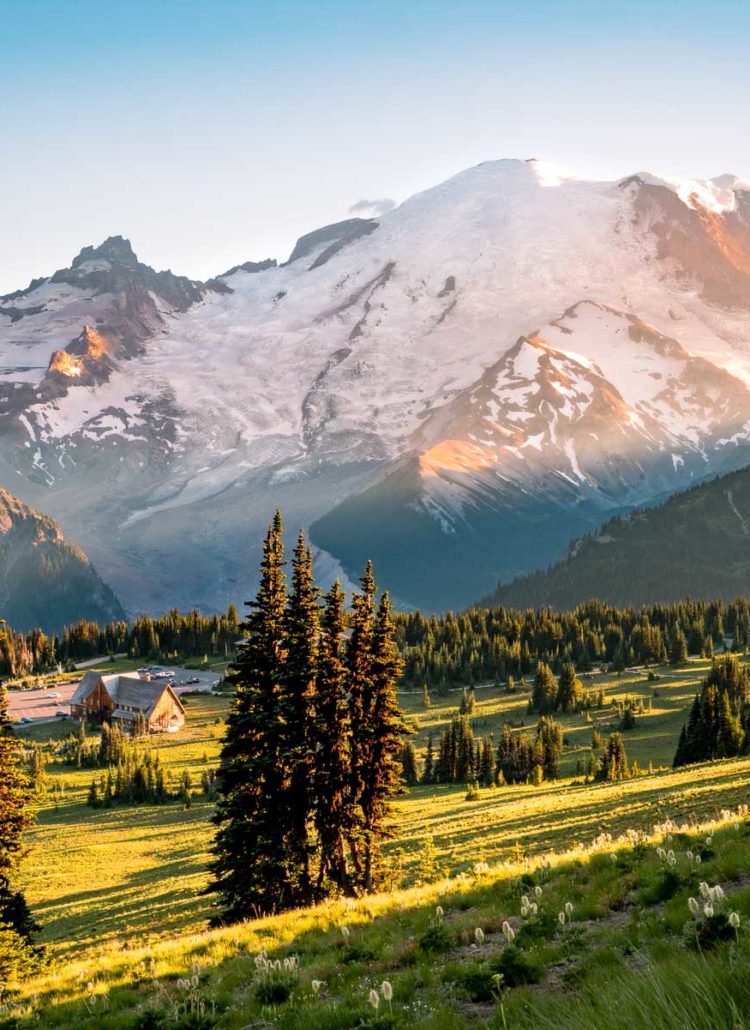

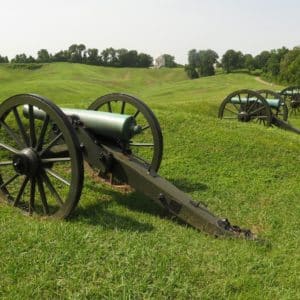

Leave a Reply